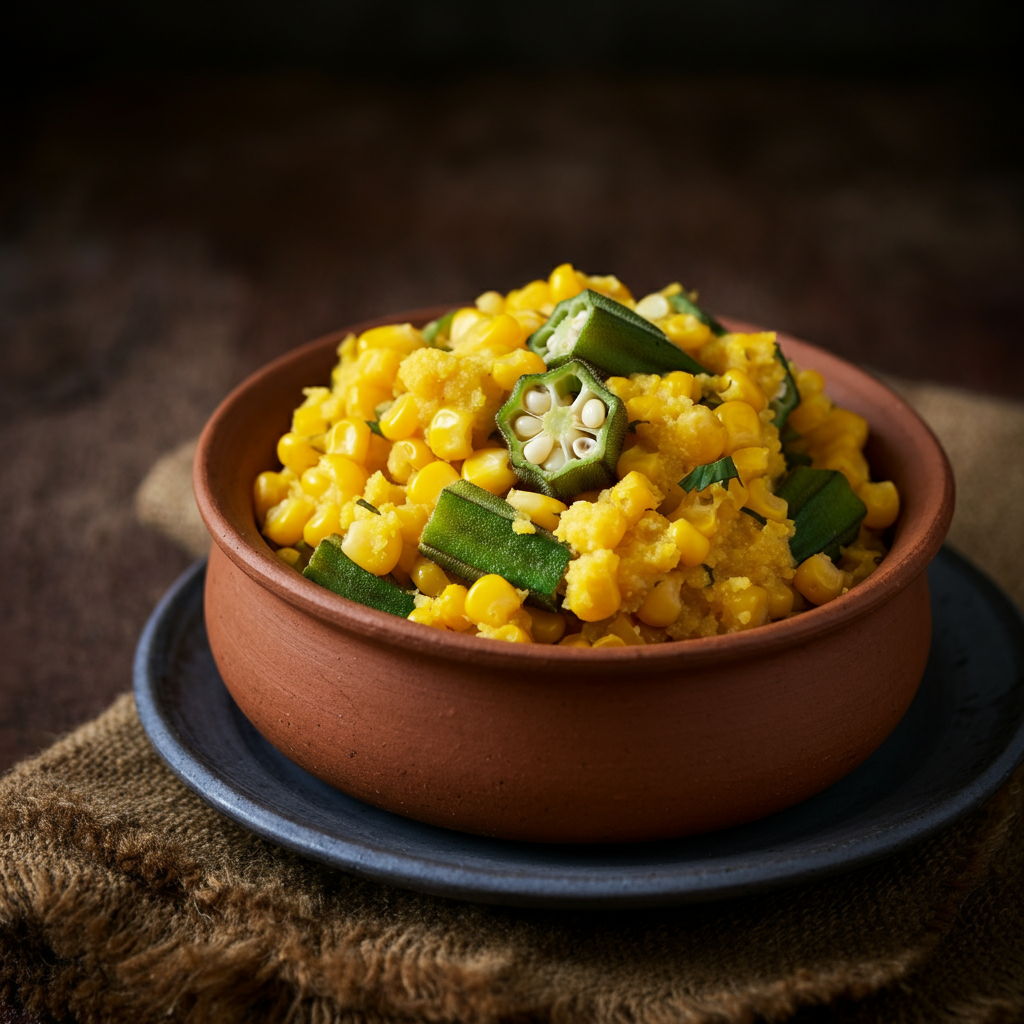Fungi
St. Kitts and Nevis
A savory side dish made with cornmeal, okra, and seasonings, often served alongside other dishes.

Origins and History
Fungi's precise origins within St. Kitts and Nevis are difficult to pinpoint definitively. However, its core ingredients – cornmeal and okra – suggest a history deeply rooted in the island's agricultural past and the culinary traditions brought by enslaved Africans. Corn, a staple crop in many parts of the world, likely found fertile ground in the Caribbean climate, and okra's introduction to the Americas through the transatlantic slave trade solidified its presence in the region's cuisine. The specific seasoning blends in Fungi likely evolved over generations, reflecting the creativity and adaptation of local cooks using readily available ingredients. While precise historical records documenting Fungi's exact emergence might be scarce, its enduring presence in St. Kitts and Nevis' culinary landscape points to a long and rich history intertwined with the island's cultural heritage.
Cultural Significance
Fungi holds a significant place in the cultural identity of St. Kitts and Nevis. It's a dish that's commonly found on tables during family gatherings, celebrations, and everyday meals. Its unpretentious nature and simple ingredients reflect a deep respect for the land and its bounty. The act of sharing Fungi represents a sense of community and togetherness. Because of its prevalence and the ease with which it can be prepared, it transcends social classes and is a unifying element in the island's culinary heritage. Passing down Fungi recipes through generations serves as a powerful way to maintain traditions and cultural connections.
Traditional Preparation
Traditional Fungi preparation in St. Kitts and Nevis typically involves a simple yet flavourful process. Cornmeal is combined with water to create a thick batter. Okra, finely chopped, is then added along with a variety of seasonings, including onions, peppers, thyme, and other herbs and spices. The mixture is then cooked, often in a skillet or pot, until it reaches a desired consistency, achieving a texture somewhere between a thick porridge and a stiff polenta. The cooking process itself varies depending on family preferences, with some cooks opting for a slower simmer while others prefer a quicker, more intense cooking method. The finished Fungi is often served warm as a savoury side dish, complementing the richer, heartier main courses prevalent in the region's cuisine.
Regional Variations
While the core ingredients remain consistent, regional variations in Fungi preparation exist within St. Kitts and Nevis itself. Differences in seasoning are common, with individual families and cooks using their unique blends of herbs and spices. Some may incorporate coconut milk for a creamier texture, while others might add different vegetables or even meat. The level of spiciness also fluctuates, depending on preferences and regional customs. These subtle variations contribute to the rich tapestry of culinary expression within the islands, showcasing the diversity of tastes and traditions.
Modern Interpretations
In recent years, Fungi has seen some modern reinterpretations while still honouring its traditional roots. Chefs have experimented with different types of cornmeal, incorporating gourmet grains or blends to enhance the flavour and texture. The addition of unexpected ingredients, such as roasted vegetables or different types of peppers, lends a creative twist. Some restaurants have elevated Fungi by serving it with more sophisticated accompaniments or integrating it into more complex dishes. These modern adaptations demonstrate the versatility of Fungi and its ability to remain a relevant and dynamic part of St. Kitts and Nevis' culinary scene while simultaneously attracting a broader audience.